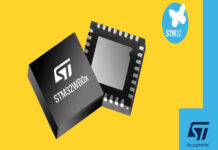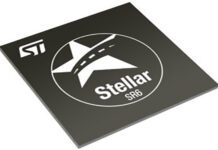Power semiconductors are used to amplify and control the flow of electrical signals, like all semiconductor devices. The two main uses for power over long distances are distribution and transmission. These powerful components can handle voltage, current, and recurrence levels.
Reducing energy loss and increasing their lifespan, semiconductors use silicon carbide (SiC) in wind and solar power converters. Due to its wide band gap, SiC is used in high-power applications. There are various SiC polytypes (polymorphs). The 4H-SiC is the most optimal solution for electrical devices. The advancement of R&D initiatives aimed at improving material capabilities is predicted to give a significant boost to the power semiconductors market.
According to a recent report by Allied Market Research, the global power semiconductor market is expected to register a notable CAGR from 2023 to 2032.
Increasing demand for wireless communications and consumer electronic products
The power semiconductors market is expanding positively due to the growing consumption of consumer electronics products. Today, a wide variety of consumer products, including communication devices (including smartwatches, tablets, smartphones, and other devices), computers (both business and personal computers feature PCBs), home appliances, and entertainment systems, require semiconductors. Smartphones are the main consumers in this market. The smartphone market has experienced fierce competition in recent years. Additionally, rising mobile phone usage is antic
The surge in demand for battery-powered, energy-efficient portable devices
Other factors, such as the rising demand for battery-powered, energy-efficient portable devices, are anticipated to fuel demand and have a positive impact on market growth in addition to the growing demand for wireless communications and consumer electronics. Powers consumer electronics, lithium-ion technology, the most dependable power source.
Despite the growing awareness of these modern batteries, a few limitations cause an objection. In this market, extending battery life has become popular around the world, better methods are being developed to produce batteries that use less energy. Manufacturers are expanding the market by making their products’ batteries more powerful, which in turn is causing consumers to demand faster charging times.
Manufacturers focus on fast charging adapters
All portable and wearable devices show the same pattern. Manufacturers like Apple, Motorola, One Plus, OPPO, and Samsung ship their products with fast-charging adapters. They want their users to spend less time plugged in, so fast charging is a crucial part of their marketing strategies. Thus, the market growth is anticipated to be assisted by the rising demand for energy-saving battery technology.
Some major players, like Texas Instruments and Infineon Technologies, are incorporating new strategies, several large company acquisitions, and partnerships with an emphasis on innovation to strengthen their foothold in the market.
For instance, a new low-dropout (LDO) linear regulator with an incredibly quick transient response for a Multi-Chip Package (MCP) based on Universal Flash Storage (UFS) was released by Magna Chip in March 2021. It is a more developed embedded Multi-Media Controller (eMMC), which was designed for contemporary write and read performance at faster speeds.
In March 2021, Omega and Alpha Semiconductor launched a new 1200V silicon carbide (SiC) SiC MOSFETs that were AEC-Q101 qualified. This is perfect for electric vehicle (EV) motor drive inverters, onboard chargers, and off-board charging stations because they need reliability and efficiency.
In February 2021, Nexperia added the AEC-Q101-qualified half-bridge package to its lineup of LFPAK56D MOSFETs. For motor control, power trains, and DC/DC applications, it offers thermal performance improvements and a 60% reduction in parasitic inductance. Thus, the growth of the global power semiconductor market is being aided in several ways by such initiatives taken by major companies around the world.















